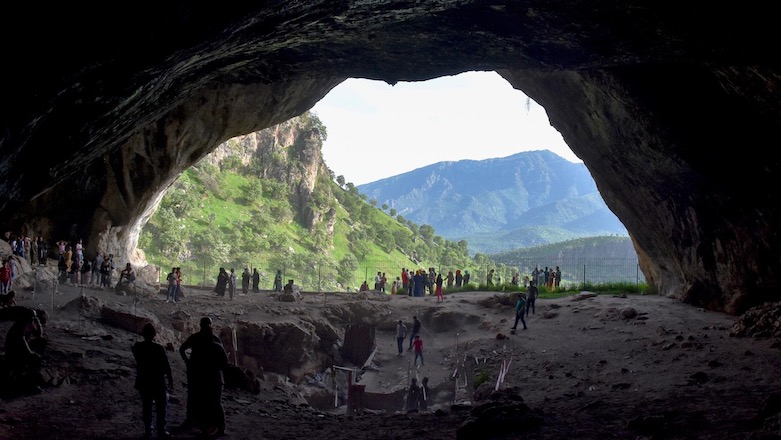Neanderthals of Kurdistan key to more discoveries about early humans

Shanidar cave in Bradost mountain, part of the Zagros mountain chain, houses one of the largest samples of Neanderthal fossils ever found. During the 20th Century, more than 130 bones and many small fragments were excavated in the cave, which is distinguished by its rectangular shape.
Measuring 18 meters high and 40 meters deep, and as wide as 40 meters at the mouth, archeologists found accumulated layers dating back to the Stone Age.
Ralph Solecki from Columbia University in New York City first excavated Shanidar between 1957 and 1961. His team found nine Neanderthal skeletons dating to around 60,000 years ago, of various ages and in different stages of preservation. Three more sets of remains were later discovered.

In 2006, Melinda Zeder of the Smithsonian Institution in Washington, DC found parts of another skeleton in the Institution’s collection. Her research suggested Neanderthals lived a much more sophisticated lifestyle than previously believed, because the remains found in Kurdistan suggested they cared for the sick, held funeral ceremonies, and buried their dead with flowers.
Ten years later, a new bone was found, and a lumbar vertebrae bone and right hand would later be discovered beside it. In 2018 and 2019 yet more skeletal remains were extracted, including a skull flattened by the weight of sediment above it.
These discoveries suggested Neanderthals lived until 40.000 years ago. The question remains whether these early people used Shanidar for ceremonies or as their homes.
In 2018, paleoanthropologist Emma Pomeroy told Kurdistan 24 that it was uncertain whether the recent discoveries were of Neanderthals who lived around the same time as part of a communal group or whether they were simply buried inside Shanidar, with the cave functioning as a cemetery.

More than 30 other proto-Neolithic skeletons have been excavated from Shanidar, dating back to 12,000 years ago.
The discoveries indicate Neanderthals may not have been as savage as previously described.
Together the discoveries have much to tell about Neanderthals, a close relation to early modern humans. For one, they indicate Neanderthals may not have been as savage as previously believed.
They may have used flowers to express love and care, and maybe appreciated beauty or fragrance. Solecki’s findings in particular suggest the Neanderthals in Bradost Mountain mourned the dead.
In 1971 Solecki wrote that the ritual was “a mournful task of collecting flowers for the dead,” and that “it seems logical to us today that pretty things like flowers should be placed with the cherished dead, but to find flowers in a Neanderthal burial that took place about 60,000 years ago is another matter.”

It was previously assumed that Neanderthals buried their dead, but the Shanidar cave evidence recovered by Solecki lends further credence to the theory. Among the remains recovered were infants and people killed by falling rocks.
Like Zeder, decades later Solecki also believed that Neanderthals treated the sick. Among the excavated remains are bones that were broken and showed signs of healing.
As prehistoric naturalists, Neanderthals may not have practiced medicine with local flora, but their teeth and chemical analysis of their bones shows they knew the area and its local plants well, as their diets contained plant matter.

The first Neanderthal fossils were discovered in 1829 in Engis, Belgium, but they were not recognized as an early human species until 1856 with the discovery of "Neanderthal 1" in the Neander Valley near Dusseldorf, Germany. Modern humans share at least 2 percent of their DNA.
While scientists know much about their appearance, lifestyle, and diet, research is still ongoing into the reason for their extinction, although many believe climate change and crossbreeding with Homo Sapiens – humans – may be factors in their demise.
